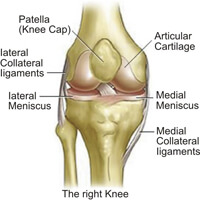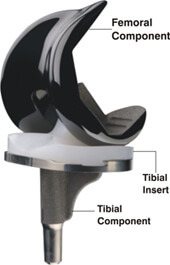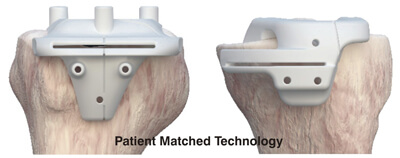Approximately five million joint replacement operations are done each year worldwide. Although most people who undergo this type of surgery are over the age of 65, but about a quarter are younger than 55. Damage to the knee joint can result from various reasons but the most common cause is Arthritis.
Surgery to replace all or part of a damaged knee joint can have a dramatic effect on the lifestyle of someone suffering from severe pain and disability, but it is a major operation which should not be undertaken lightly. Your consultant will advise you about the likely benefits of surgery, but the final decision to go ahead is yours, and before making it you should be sure that your expectations about its outcome are realistic and that you understand what is involved. It is hoped that this article will provide enough information to help you make an informed decision.
Knee replacement is a way of getting the joint back into shape. It involves cutting out the damaged portion of the joint and replacing it with a new one. This is a very common procedure, which has successfully brought back the mobility to the patients of knee pain and arthritis.
THE KNEE JOINT:

The knee joint comprises of a long thigh bone articulated with the upper end of shin bone along with a disc like knee cap. These bones are kept together by strong ligaments and muscles for normal functioning of the knee joint as it is the joint which bears the weight of the body.The ends participating in the joint are covered with cartilage, so that the surface of the bones should not rub with each other.The joint cavity is lined by a membrane called as the synovium, which secretes an oily synovial fluid into the joint and allows smooth movement of the thigh bone with shin bone and knee cap.
Ligaments and muscles help to move the knee. These structures do generally not stretch when the knee is bent or extended. However, if the ligaments and muscles are not healthy and flexible enough, the ligament and muscles are stretched to the point where they become weak and ineffective in moving the knee. When this happens, the person begins to experience pain in the joint.
When you exercise your knees, you strengthen the ligaments around the joint and allow the muscles to stretch further. Stretching the ligaments is like strengthening the muscles. The more ligaments you stretch, the stronger they become. Therefore your joints will support the weight and movement of the weight you put on them.
PROSTHESIS OF KNEE JOINT :
The doctor will decide about the best material to be used in your particular case.
This selection will depend upon factors such as –
- Your Age and Normal Level of Activity.
- Degree of Damage.
- Deterioration of the Bones of your Knee Joint.

- Femoral Component :It is the part which fits onto the thigh bone. It is made of highly polished alloy like cobalt, chrome, oxinium.
- Tibial component :This is like a tray. It is also made of metal like Titanium. It comes with a highly cross linked plastic dish like structure together they make the tibial component.
- Patellar Component :It fits on the patella. It is also made of highly cross linked plastic. All these components are fitted over respective bones with the help of bone cement.
- Oxidized Zirconium :Is a tough Zirconium alloy metal substrate which decreases the wear as a result of which life of joint increases.
The following systems are helpful to the surgeon while performing surgery, which decreases duration of surgery & increases accuracy.
Systems used during TKR surgery :
- Computer Navigation :This system allows surgeon to take help of computer during surgery. This increases accuracy of surgery, which inturn increases the long term success of operation.
- Patient Matched Technology :In this most modern technology, patients MRI Scan and X-rays are sent to Engineers in the United States.They prepare specific blocks for individual patients. This helps in making the surgery faster and more accurate. This also helps in increasing the long term results of surgery


